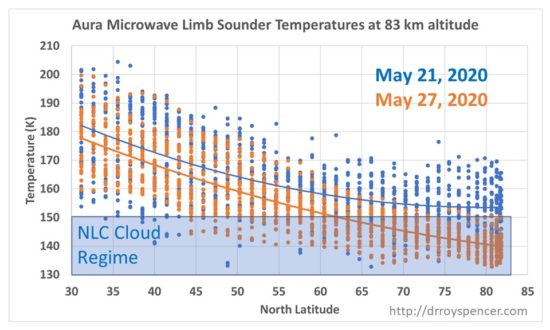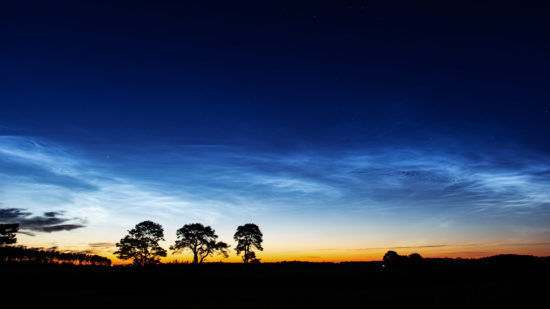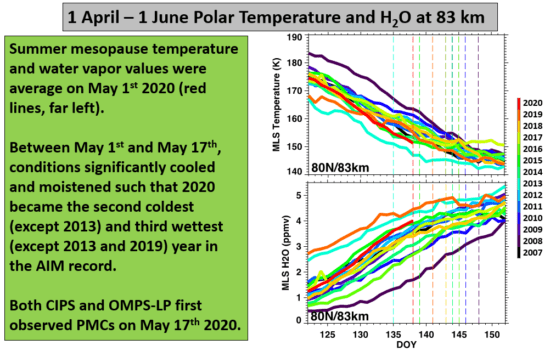Noctilucent clouds (NLCs) are often visible in the extreme upper atmosphere (80-85 km altitude) well after sunset in the late spring and summer at high northern latitudes. They form from ice condensing on meteoric dust at extremely cold temperatures (below 150 Kelvin or -190 deg. F). The cold temperatures are due to adiabatic cooling from dynamic uplift combined with little ozone to absorb the sun’s ultraviolet radiation.
With current solar minimum conditions reducing solar heating by ultraviolet radiation, and slowly increasing CO2 in the atmosphere causing enhanced infrared cooling to outer space, record low temperature are occurring. This has extended the southernmost viewing opportunity for NLCs from the usual ~60 deg. N latitude to as low as 35N latitude last year, with NLC sightings near Los Angeles and Las Vegas in 2019.
This recent article by Dr. Tony Phillips suggested that 2020 is shaping up to be another good NLC viewing season. An earlier article by Tony included this nice plot of April-May temperatures at 80 N latitude from this year compared to previous years, showing the general cooling trend during the current solar minimum conditions.
We downloaded some more recent Aura satellite Microwave Limb Sounder data, and plotted it as a function of latitude. Note how fast temperatures dropped in only 6 days… 1-2 deg. C per day depending upon latitude.

Upper mesospheric temperatures at 83 km altitude on two different days in May, 2020 as a function of latitude. Lines are 2nd order polynomial fits to the data, providing average temperatures as a function of latitude.
The 141 K average temperature on May 27 (Day 148) at 80N latitude appears to be a new record low if we compare it to the data in the previous plot by Dr. Harvey.
I will try to keep track of these temperatures as the NLC season progresses in the coming weeks. So far, NLC sightings have been mostly in northern Europe and the UK.

 Home/Blog
Home/Blog






I recall that the UK was experiencing a severe drought a few years ago. Then it took a turn for the worst.